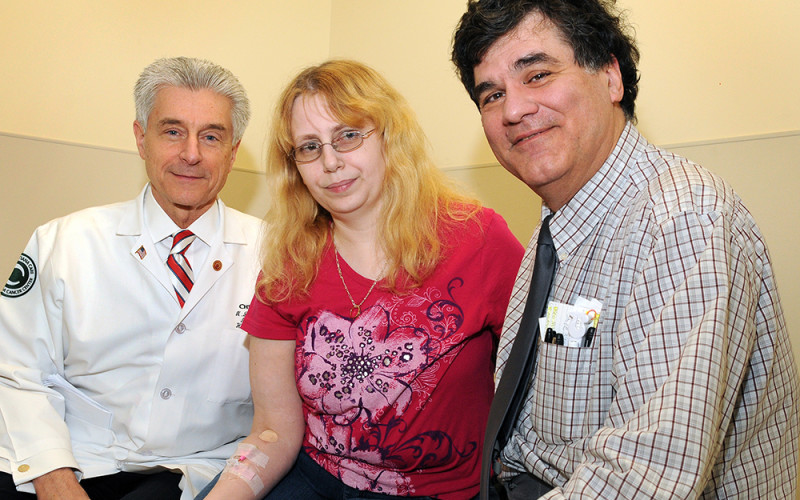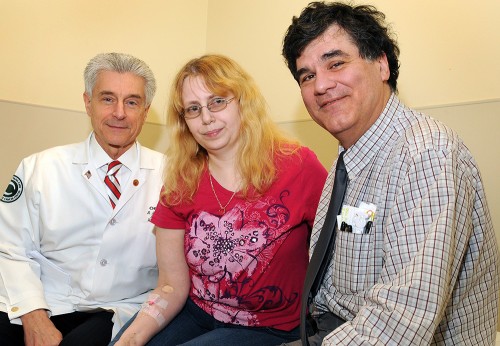A life is worth saving twice: Bone marrow donor reaches across the sea again, 20 years later


More than 21 years ago, Kallie Roberts, then 17, went to a New Jersey hospital for what she thought was an asthma attack.
But blood work revealed that she had leukemia. Treatment with radiation and high-dose chemotherapy — the only available therapies in 1991 — would destroy all of Roberts’s bone marrow cells. She would need a bone marrow transplant and stay in the hospital for a month to complete her therapy, her oncologist Michael Guarino, M.D., informed her.
Finding a bone marrow donor was not always easy then, nor is it now. Only one in 190,014 people on the worldwide donor registry provided a match — Paul Johns, 44, from Staffordshire, England was willing to give a liter of his bone marrow, and the transplant was successful.
Fast forward to winter 2012. Roberts had been cancer-free for two decades. Then, blood work done during a semi-annual checkup showed abnormal cells again — a recurrence of leukemia. Could the Englishman come through for her again?
Roberts and Johns had kept in touch for much of the time between her illnesses. But there had been a recent lapse in contact. Johns was no longer on the donor registry.
Fortunately, a colleague of Dr. Guarino was able to trace him to another address in England, and Johns agreed to donate five vials of blood and a backup supply of lymphocytes, to be stored at Christiana Care’s Department of Pathology in case future treatments are needed. This time, Roberts went home the same day she had her treatment.
Radical bone marrow transplants like the procedure Roberts had the first time no longer are necessary, said Dr. Guarino. A drug named Gleevec slows the spread of leukemia, and lymphocytes from Johns’ blood could strengthen Roberts’ defense. But without Johns’ blood, she’d have had to find another matching donor.
“This time around,” Roberts says, “I’ve been more on an emotional roller coaster. I had to explain to my friends’ kids, who I consider my nieces and nephews, that it was possible that I could die.”
Johns told her he would donate again if need be.
“He’s like my second father,” Roberts said. “I wouldn’t be here if it weren’t for him.”